Torquay Tramways Company
Summary
Photographs which show staff of the Torquay Tramways Company in anything like close up — prior to the Great War - are relatively rare, so details of the uniforms and insignia worn are uncertain.
Conductors appear to have been issued with double-breasted jackets with two rows of four buttons and lapels; the latter seemingly left plain, i.e., without badges of any kind. Photographs depicting motormen only show them in greatcoats, so details of the uniform worn underneath are unknown, though it may well have been identical to that worn by conductors. By the early 1920s however, motormen were definitely wearing double-breasted 'lancer-style' tunics with two rows of five buttons, epaulettes (with button fastenings) and upright collars; the latter carried the system initials — 'TTCo' — on both sides in individual metal letters. Conductors were now issued with single-breasted jackets with five buttons, two waist pockets (with flaps), two breast pockets (with button closures), epaulettes (with button fastenings) and upright collars; the latter probably carried the system initials on both sides, though the best surviving photograph shows them unadorned. Caps were in a military style with a tensioned crown (top) and these carried standard, 'off the shelf', script-lettering grade badges — either 'Motorman' or 'Conductor'. The badges were probably brass, but as marked buttons are unknown, and indeed probably never existed (these are a likely indicator of the badge material), this is based solely on the fact that motormen's licences, an example of which has survived (see below), were brass.
Tramcar crews were also issued with double-breasted overcoats with lapels; the latter bore individual 'T T Co' initials, at least on the right-hand side, and probably on the left too.
Motormen and conductors were required to wear brass licences which bore the full system title along with a grade and an employee number; these were usually suspended from the bearer's left breast.
It is currently unclear whether a switch was made to British Electric Traction Company uniforms in 1931, following the latter's takeover over the TTCo's parent company, the National Electric Construction Company.
By the time of the Great War, and probably prior to that, inspectors were wearing single-breasted tunics with hidden buttons (or an hook and eye affair), edged in a finer material than the main body of the jackets, and with upright collars; the latter bore the grade - Inspector - in embroidered script lettering. These were complemented by double-breasted overcoats (with plain black buttons) with 'Inspector' embroidered on the lapels in script lettering. Inspectors' caps were also military in style and again carried the grade - Inspector - in embroidered script lettering.
Women were certainly employed as conductresses during the Great War to replace men lost to the armed services, however, photos of them are yet to come to light, so it is currently unclear what uniforms they wore.
For a history of the system, see: 'Plymouth & Torquay Tramways: Including Babbacombe Cliff Lift ' by R Anderson; Middleton Press (2011).
Images
Motormen and conductors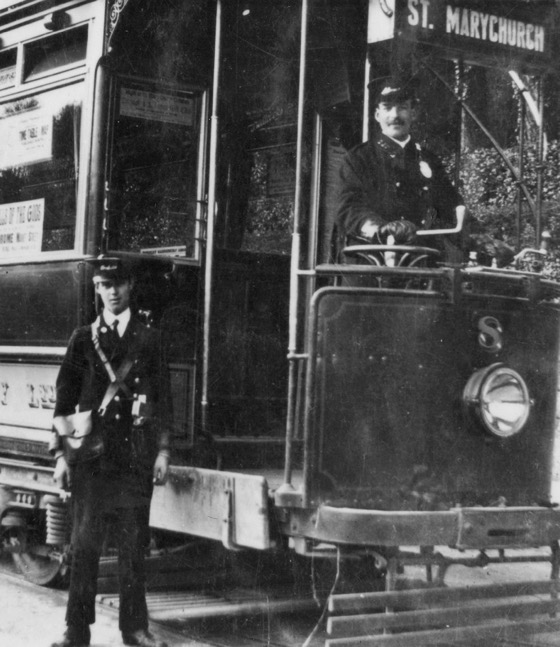
A conductor and motorman with Tramcar No 8, bound for St Marychurch, at Torre Station — photo undated, but probably taken around the time of the Great War. The conductor is wearing a double-breasted, naval-style jacket with two rows of four buttons and lapels; although he does not appear to be wearing a licence (at least not visible in the photo), the motorman most certainly is, presumably identical to the example depicted below.
Standard ‘off the shelf’ script-lettering cap badges of the type used by the Torquay Tramways Company — brass. Author's Collection.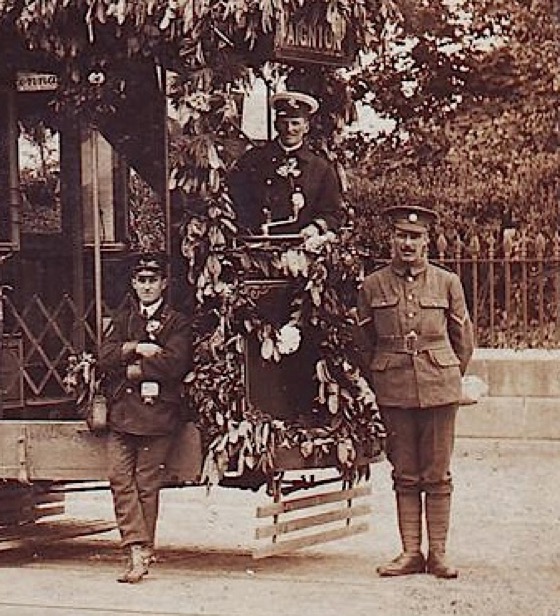
Conductor, motorman and soldier pose with a decorated tramcar, raising money for 'our wounded heroes' during the Great War. The motorman is definitely wearing a licence on his left breast, though the situation with his conductor is less clear. Photo courtesy of the Tramways and Light Railway Society, with thanks to David Voice.
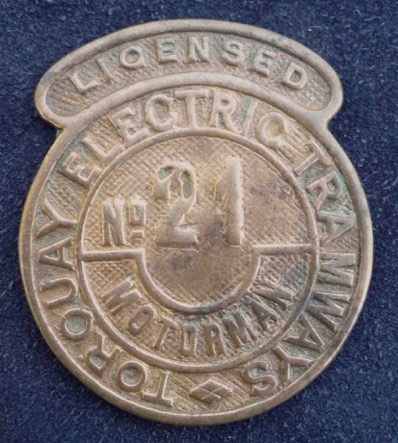
Torquay Electric Tramways Motorman licence — brass. Author's Collection.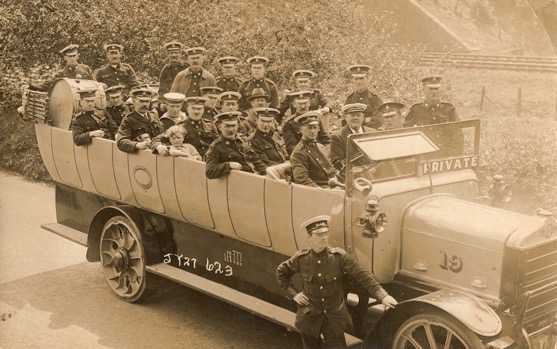
Torquay Tramways Company Daimler charabanc No 19 - photo undated, but given that this was delivered new in 1921, and it appears to be in pristine condition, probably taken in that year. Judging by their cap badges, the passengers appear to be members of the Devonshire Regiment.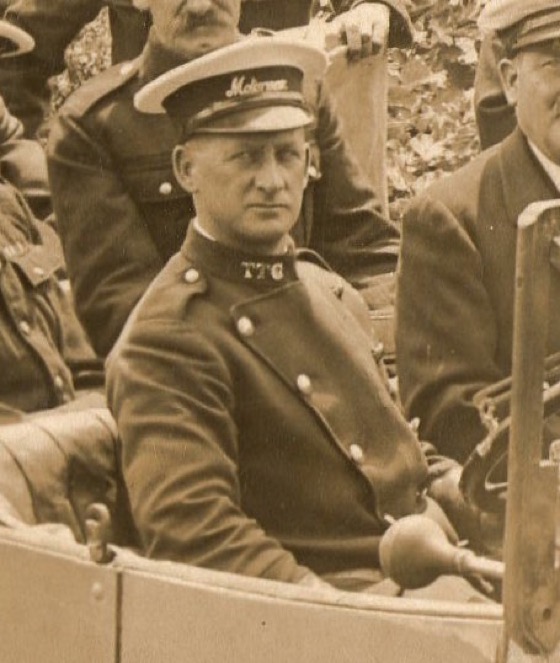
A blow-up of the above photo showing the driver, who is ostensibly a motorman. His grade badge and collar insignia are easily discerned.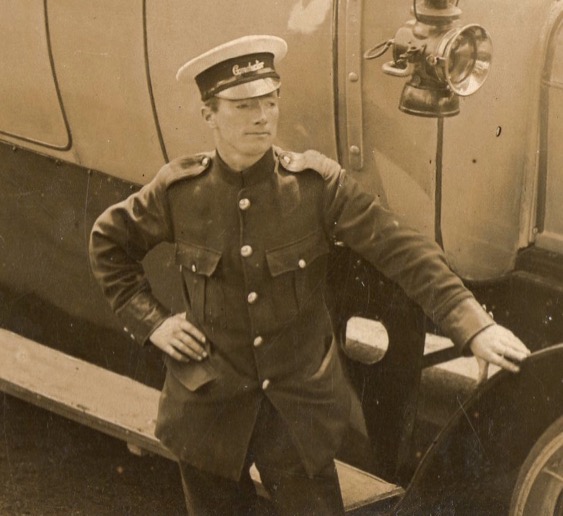
Another blow-up of the above photo, this time showing the conductor, whose collars are plain.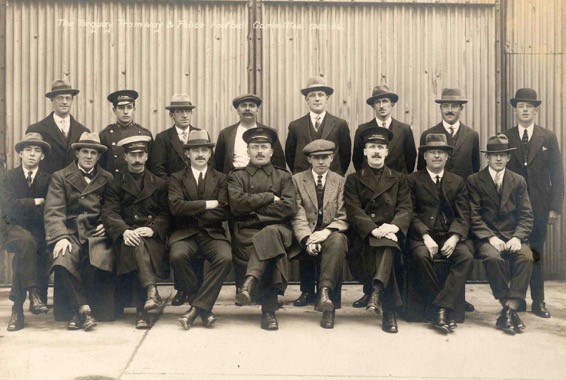
The Torquay Tramway and Police Football Committee (1923/24). The photo shows a motorman (back row; 2nd left) and two inspectors (front row; 3rd and 7th left). With thanks to David Bryant.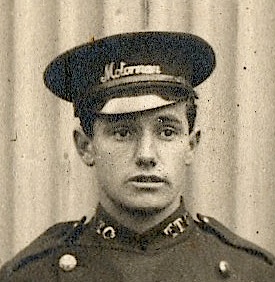
A blow up of the above photo showing the Motorman.
Senior staff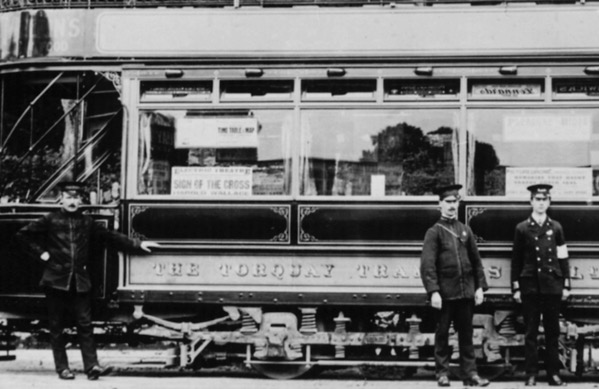
Two inspectors and a conductor with a tramcar dedicated to transporting convalescing servicemen during the Great War. The conductor appears to be wearing a licence on his left breast. Photo courtesy of the Tramways and Light Railway Society, with thanks to David Voice.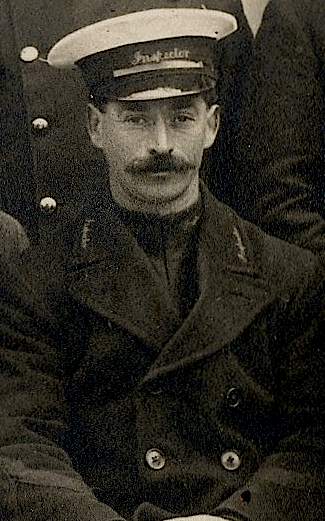
A blow up of the Tramway and Police Football Committee photo above, showing one of the inspectors.